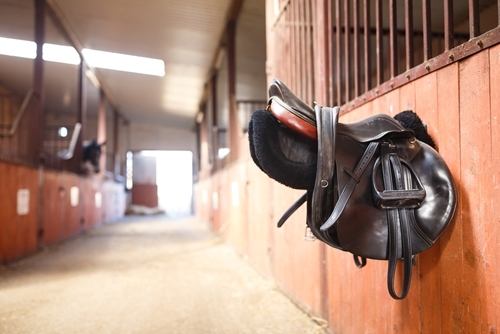When it comes to providing the ultimate riding comfort for both you and your horse, ensuring that your saddle is properly fitted is never as easy as it sounds. There are a variety of factors that determine whether your saddle is properly customized for your horse, ranging from adjusting to the back arch of the animal to finding the right type of saddle for your training regimen. You also have to consider your own size and dimensions, factoring in whether you have long legs or wider hips. Trainers trying to optimize their riding experience to the fullest will want to consider these guidelines to find the best-fitting saddle for you and your horse:Measure the withers
A horse’s withers are the region on its body that start at the top of its shoulders, near the neck joints, and extends the length of its vertebrae, towards its rear. A common mistake that many riders make is placing the saddle too far over the withers, especially when the saddle is closer to the neck. A good rule of thumb when considering proper placement is putting the saddle near the top of the withers and slowly pushing it backwards on the horse’s body. Do so until you find a natural resting position, which tends to be at least 2-3 inches behind a horse’s shoulder blades. You’ll want a little clearance room between the saddle and the base of the withers, so strive for at least a few inches of width in between the two.
Front of the bar
You never want to restrict movement from your horse’s neck, which is why the front of the saddle bar should always be placed just behind the shoulder blade. Not only is this useful when trying to steer the direction of your horse, but leaving the bar too far forward will likely result in extensive discomfort, irritating your horse in the process.
Placing your gullet
The gullet is the section under the tunnel of the saddle that slides over the horse’s withers. It helps hold the bars of the saddle in place and is shaped to accurately fit a horse’s dimensions. Its measurements are an essential component to determining proper saddle fitting as well as providing comfort for the horse. For instance, if the saddle bars are too spread out, the gullet will put extra pressure upon a horse’s withers. If the angle of the saddle bars is too tight, this could cause the gullet to pinch together a horse’s shoulders. If you’re not sure how much room is necessary between the back of a horse and the gullet, you should generally never have more than four fingers width of space between the withers and the saddle fork. Anything less or higher may have a negative impact upon a horse’s spinal health over time.
Saddle pads
If you’re worried that your weight and saddle may cause discomfort to your horse, consider using saddle pads. These accessories are great for cutting down on any friction that may produce tension or irritation within a horse’s skin or withers. They’re also great for absorbing a horse’s sweat, which can accumulate quickly during training and result in skin irritation.
Assess your own comfort
Of course, if you’re feeling uncomfortable while riding your horse, there’s definitely something wrong. If your legs don’t hang loosely or if you’re constantly losing balance during a trot, your saddle probably isn’t fitted right. There are many services that offer saddle evaluations for you and your horse, so you know you’re getting the right fit before you make an expensive investment.
Take care of tack and leather
One of the more overlooked aspects to proper saddle placement is keeping your tack and leather in good condition. If you haven’t been routinely cleaning your saddle, frequent friction between the leather and your horse’s back may cause anything from excess moisture to buildup to skin irritation. A great option for keeping leather products in excellent condition is Finish Line’s Neatsfoot Oil, made from 100 percent natural ingredients to keep leather looking its best.








